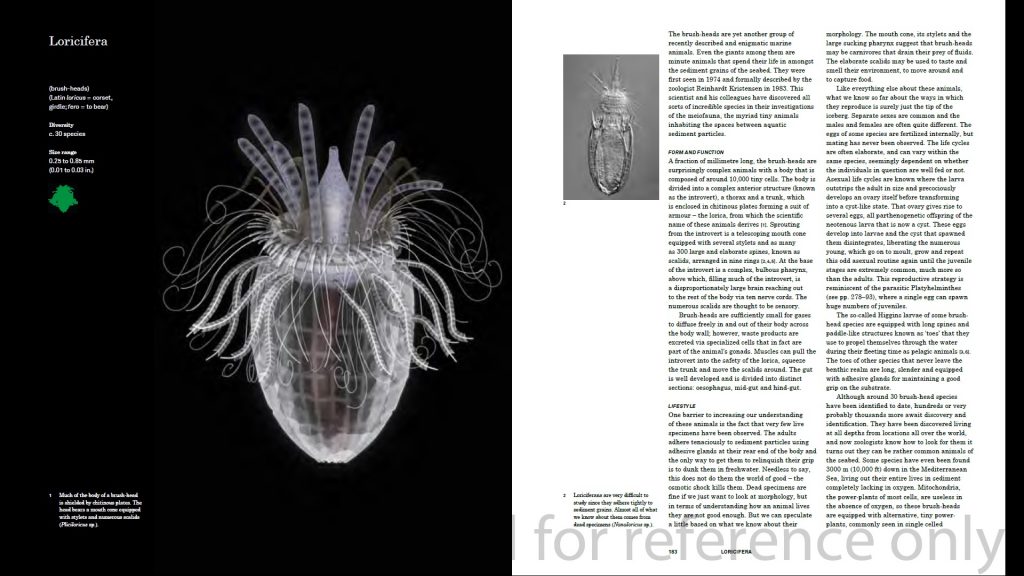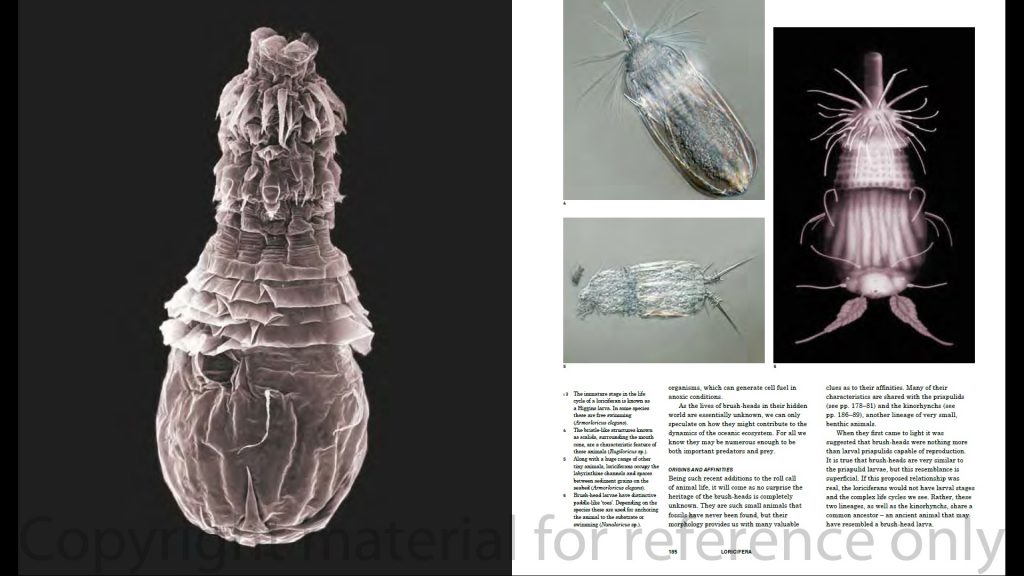Brush-head reproduction
The brush-heads are yet another group of recently described and enigmatic marine animals. Even the giants among them are minute animals that spend their life in amongst the sediment grains of the sea bed. They were first seen in 1974 and formally described by the zoologist, Reinhardt Kristensen, in 1983. This scientist and his colleagues have discovered all sorts of incredible species in their investigations of the meiofauna; the myriad tiny animals inhabiting the spaces between aquatic sediment particles.
Like everything else about these animals what we know so far about the ways in which they reproduce is the tip of the proverbial iceberg. Separate sexes are common and the males and females are often quite different. The eggs of some species are fertilized internally, but mating has never been observed. The life cycles are often elaborate, often varying within the same species, seemingly dependent on whether the individuals in question are well fed or not. Asexual life cycles are known where the larva outstrips the adult in size and precociously develops an ovary itself before transforming into a cyst-like state. That ovary gives rise to several eggs, all parthenogenetic offspring of the neotenous larva that is now a cyst. These eggs develop into larvae and the cyst that spawned them disintegrates liberating the numerous parthenogenetic young into the water. These larvae go on to moult, grow and repeat this odd asexual routine again until the juvenile stages are extremely common, much more so than the adults. This reproductive strategy is reminiscent of the parasitic Platyhelminthes where a single egg can spawn huge numbers of juveniles.
A summary of these animals from my book, Animal Earth.


Leave a Reply